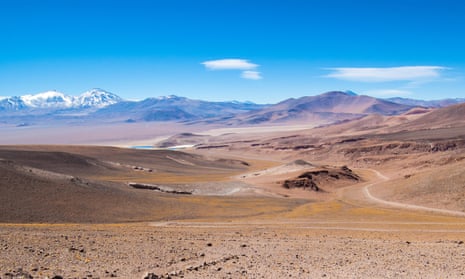The sunniest place in the world has been identified as the Altiplano, an arid plateau in the Atacama desert of Chile, in the foothills of the Andes. A recent study used five years of observations from an atmospheric observatory on the plateau and found the sunshine at the site was similar in intensity to a summer day on Venus, even though Venus lies about 28% closer to the sun than the Earth does.
The Altiplano is about 4,000 metres above sea level and is usually cold and parched, with the lowest rainfall in the world. It also has a very thin atmosphere and low concentrations of water vapour, ozone, dust and other particles, helping give extremely clear skies and allowing powerful solar radiation to reach the ground, which would make this an ideal location for solar power plants.
Another reason the Altiplano is intensely sunny is thanks to its location, in the southern hemisphere. In the southern summer the Earth’s orbit is closer to the sun, reaching its closest point, known as perihelion, in early January, resulting in solar irradiance 7% greater in the southern hemisphere than summer in the northern hemisphere.

The Altiplano – Earth’s sunniest spot similar to Venus, say scientists
This article is more than 7 months old
Study finds plateau in Atacama desert has sunshine comparable in intensity to a summer day on Venus
Explore more on these topics
Comments (…)
Sign in or create your Guardian account to join the discussion